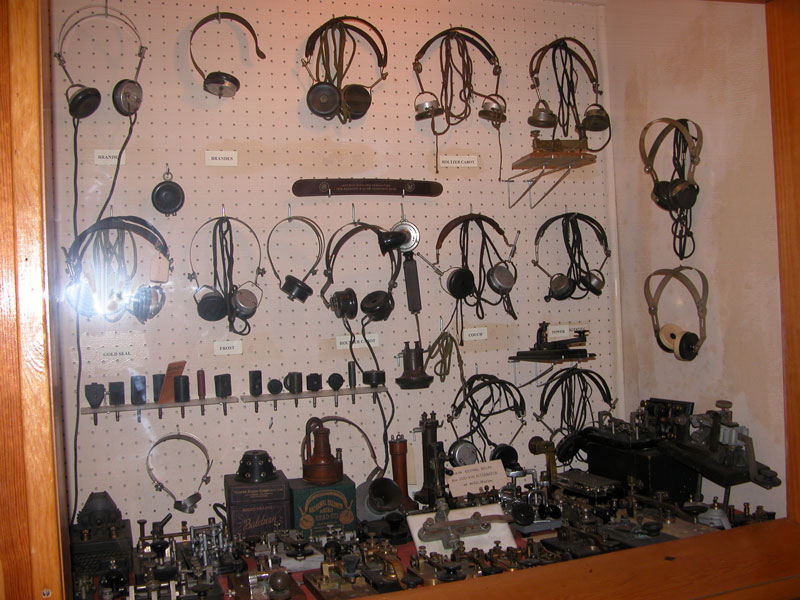Also, the transmitting was not voice originally, it was all telegraph, so this particular window shows a few earphones and a variety of different keys. You’ll notice this one right by my finger is a one-kilowatt and has a contact about that big around, and it’s heavy duty. And that’s designed for keying a big spark transmitter. The company in Boston made electronic equipment, and they favored using marble for the insulation. You have to realize, modern plastics had not yet been developed, and so, proper insulators were hard to come by, and marble was pretty good as long as there was not a streak of metal in it, which could be very bad.
Fred – “Now, I remember companies, when I first started work, would have big catalogs of spare parts for a machine. And each had a code word, a wireless code word, so they didn’t have to type out the long explanation of the part. They would have a few quick symbols to indicate that part. I suppose so they could transmit a lot of data over these telegraph keys.”
The world was much simpler in those days.
This is a Navy key for a high-power transmitter, something like a 10,000 watt job. You can see the fin coolers on the contacts.
Fred – “So, all the power went through the key!”
Absolutely. The operator was sitting there with 10,000 watts in the contacts right here. He had better keep his hooks off it!
Fred – “They never made them with relays?”
Oh, they did, but they did it both ways.
Text from the transcript of a tour of New England Wireless & Steam Museum’s Wireless Building given by Robert W. Merriam on a winter day in 2012. Transcription by Craig H. Moody, K1CHM. Edited by Fred Jaggi.
